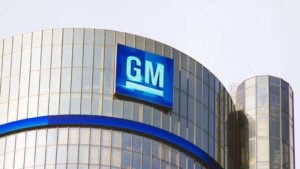For years, the heralding of a new era in automotive technology has tantalized our imaginations. The promise of flying cars and vehicles devoid of manual intervention is inching closer to reality, especially with the advent of advanced driver-assist systems (ADAS). While Tesla (NASDAQ:TSLA) spearheads the pursuit for a fully autonomous fleet of robotaxis, currently residing at a Level 2 among Levels 3-5 of autonomy, several other players are delving into this realm. As the competition heats up, it’s prudent to explore alternative self-driving car stocks that show promise in this burgeoning market.
Amid the landscape of autonomous driving, certain companies have ventured into the domain, some boasting operational fleets of robotaxis in crucial markets. For investors seeking opportunities in this transformative space, let’s delve into three self-driving car stocks that are poised to emerge as frontrunners in the innovative race towards automation within the automotive sector.
Alphabet (GOOG): A Titan in Self-Driving Technology

Renowned as one of the Magnificent Seven stocks, Alphabet (NASDAQ:GOOG) stands as a frontrunner in the self-driving car market. Under its subsidiary Waymo, the company has showcased remarkable growth in recent times, notably launching paid robotaxi services in the Los Angeles market. Overcoming initial hurdles from the Teamsters Union and the Los Angeles Department of Transportation, Waymo secured regulatory green lights for service expansion, following complimentary “tour” rides to woo customers.
Revealing that over 50,000 individuals eagerly anticipate its service launch, Waymo’s foray into a 63-square-mile Santa Monica-to-downtown L.A. domain with fewer than 50 cars mirrors a burgeoning trend towards autonomous transportation. Witnessing Waymo’s driverless units in action is an awe-inspiring sight, heralding a dystopian yet innovative future under Alphabet’s aegis.
General Motors (GM): Resilient Innovators in Autonomous Terrain

While not traditionally synonymous with driverless cars, General Motors (NYSE:GM) boldly strides into the autonomous driving arena with its Cruise division leading the charge in self-driving robotaxis. Despite setbacks post a pedestrian incident in San Francisco that halted Cruise platform development, GM vows a resurgence by announcing plans to resume self-driving robotaxi tests in Phoenix, Arizona. A prospect of Cruise’s imminent return, potentially starting afresh in Houston or Dallas, bears testament to its reignition within the autonomous driving sphere.
Cruise’s prior strides as a top player in autonomous driving, coupled with its renewed safety-focused management approach, signal a compelling narrative of resilience amid trials. If GM calibrates its trajectory and masters the self-driving realm, it stands primed as a contender to watch in the self-driving realm.
Ford (F): Embracing Caution in the Self-Driving Landscape

As a seasoned rival to GM, Ford (NYSE:F) embarks on its journey into the self-driving domain, characterized by a meticulous and cautious approach. Embarking on the cusp of this nascent market, Ford unveils plans to roll out a fourth-generation self-driving test vehicle, hailing from its Escape Hybrid platform, in pivotal markets. Harnessing its partnership with Argo, an autonomous company it previously invested in during 2017, Ford sets the stage for a strategic foray into self-driving innovations.
While the outcome of Ford’s self-driving venture remains an unfolding narrative, its commitment to launching a full-service self-driving system after comprehensive testing portends a high-risk yet potentially rewarding trajectory within the U.S. market, aligning its investments with strategic avenues aimed at fostering stable growth.
